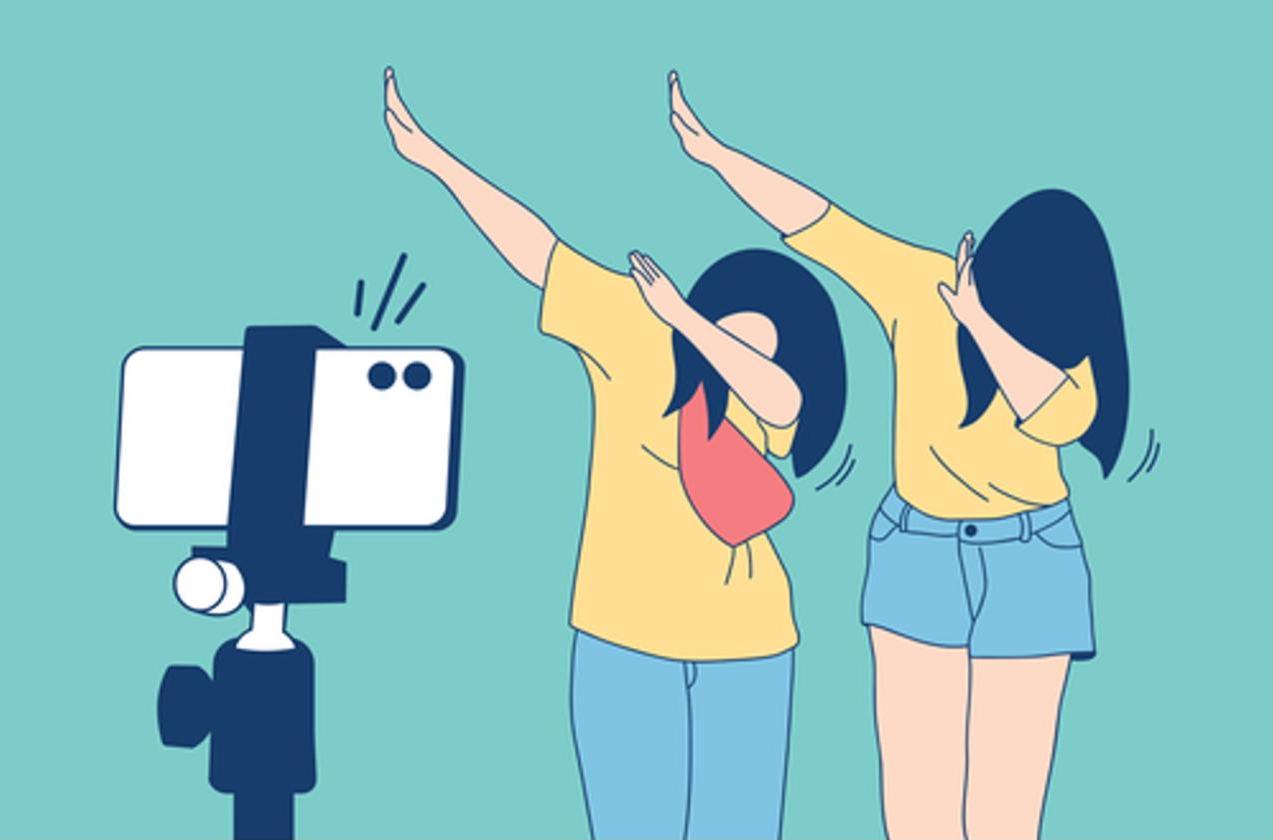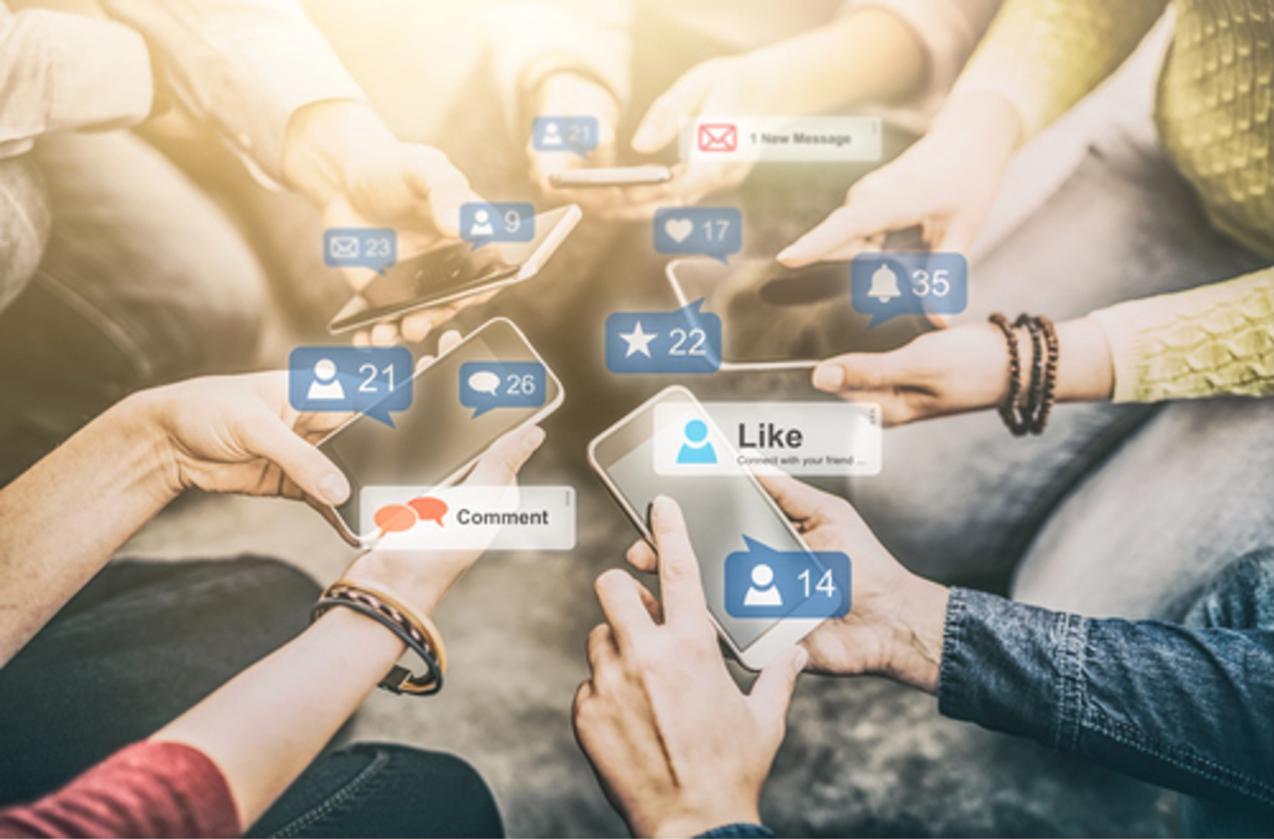- The Growing Popularity of Social Media Among Young People
- Psychological Impact: From Increased Anxiety to Depression
- Social Networks and Identity Formation
- The Role of Family and School in Regulating Time Online
- The Benefits of Social Networks: Opportunities and Prospects
- Social Networks and the Development of Emotional Intelligence
- Impact on the Formation of Worldview and Values
- Social Networks and the Physical Health of Adolescents
- The Role of Adults in Digital Education
- Results and Recommendations
The Impact of Social Media on the Psyche and Behavior of Teenagers: An Overview of the Current Problem
-
Published:12 June 2025
-
Updated:13 June 2025

In recent decades, social media has become an integral part of the lives of millions of people around the world, especially teenagers. For the younger generation, Internet platforms and messengers are not just a means of communication, but also a space for self-expression, obtaining information, and forming a social identity. However, the intensive use of social media raises serious questions about how it affects the mental health and behavior of teenagers.
The Growing Popularity of Social Media Among Young People
Today's teenagers grew up in the digital age, and for them, virtual communication often takes up as much time as live communication. Social networks such as Instagram, TikTok, and others have become the main communication channels where they make friends, share emotions, seek support, and find inspiration. According to recent studies, more than 90% of teenagers use at least one social platform daily.
This mass hobby has positive aspects - expanding the circle of communication, access to various content, and the opportunity for learning and creative self-expression. However, there is also a downside associated with possible psychological and social risks.
Psychological Impact: From Increased Anxiety to Depression
Many experts note that active use of social networks often leads to a deterioration in the emotional state of teenagers. Constantly comparing oneself with idealized images demonstrated by popular bloggers and peers gives rise to a feeling of insecurity and low self-esteem.
In addition, the endless flow of information and the constant desire to stay “in the know” of events contribute to the development of anxiety. Teenagers may experience a fear of missing out (the so-called FOMO - fear of missing out), which increases stress.
It is also not uncommon for virtual communication to replace real communication, which deteriorates the quality of interpersonal relationships and reduces emotional support from family and friends.
Social Networks and Identity Formation
Adolescence is a time to search for one’s “I” and form values and views on life. Social networks are becoming an arena where young people try on different images, test out roles, and demonstrate their creative abilities. Here, they receive feedback from their peers, which is important for developing confidence and self-esteem.
However, the influence of social networks is far from always positive. Often, teenagers adapt to trends and standards imposed by popular accounts, which can lead to a loss of individuality and the development of conformism. The pressure to meet certain beauty standards, behavior, or lifestyle sometimes causes stress and even forms destructive habits.

Impact on studies and daily routine
Often, excessive immersion in social networks affects the educational process. Teenagers are distracted by endless news feeds, notifications, and messages, which reduces concentration and academic performance. Sleep disturbances are another common problem associated with late-night use of gadgets.
Research shows that teenagers who spend more than three hours a day on social networks are more likely to experience problems with attentiveness and decreased motivation to study. This is due not only to wasted time but also to information overload and brain fatigue.
Cyberbullying and online safety
One of the pressing issues related to the influence of social networks is the phenomenon of cyberbullying and insults on the Internet. Anonymity and remoteness of communication often provoke aggressive behavior among teenagers. Victims of such violence experience fear, anxiety, depression, and even serious psychosomatic disorders.
Parents and teachers should specialize in developing digital safety and critical thinking skills to help teenagers navigate the virtual space and protect themselves from negative influences.
To ensure healthy use of social media:
- Focus on balance: make sure your children are also involved in offline social interaction and have time for activities that help them develop identity and confidence: attending sports, creative clubs, etc.
- Turn off notifications: App developers are getting increasingly aggressive with notifications to force users to get distracted and use their phones constantly. But this is something that can and should be resisted.
- Teenagers in the so-called transition period require special attention, and they are the ones who have a higher risk of developing depression. The negative impact of social media can make a big difference when self-confidence drops.
- Teach teens how to use social media consciously: encourage them to be honest with themselves about how they feel when they spend time on social media, and to refrain from interactions that increase stress or feelings of unhappiness.
- Phone-free time before bed: Implement a policy prohibiting smartphones in the bedroom after a certain time and at night.
- Model restraint and balance by example by giving up gadgets to spend quality time with your family: on excursions, outings, finding shared activities and hobbies.
The Role of Family and School in Regulating Time Online
To minimize negative consequences, it is important to set healthy boundaries for the use of social networks. Parents can set an example, control the time spent by their child on the Internet, and stimulate interest in offline activities. Open dialogue and joint discussions help teenagers consciously choose content and form habits.
Educational institutions also play a significant role by implementing media literacy programs that teach teenagers how to analyze information, understand manipulation mechanisms, and use social media safely and productively.

The Benefits of Social Networks: Opportunities and Prospects
Despite the existing risks, one cannot deny the enormous potential of social networks for the development of teenagers. When used correctly, they help develop communication skills, creative thinking, broaden horizons, and even provide access to new educational resources.
Modern platforms allow teenagers to express themselves through blogging, video creativity, scientific and social projects, uniting with like-minded people, and supporting important initiatives.
Social Networks and the Development of Emotional Intelligence
One of the important aspects of the influence of social networks on teenagers is their role in the development of emotional intelligence - the ability to understand their feelings and the feelings of others, as well as manage them. In the virtual space, teenagers learn to express emotions through text, photos, videos, and emojis. However, the lack of live contact and non-verbal signals often leads to misunderstandings and distortion of meanings, leading to conflicts and negative emotions.
On the other hand, social networks provide teenagers with the opportunity to find support and understanding among peers who are facing similar problems. Special groups and communities help them feel less alone, share experiences, and get advice. This is especially important for those who have difficulty communicating in real life or face social isolation.
Impact on the Formation of Worldview and Values
Adolescence is a period of active formation of views on life and basic life values. Social networks, being the main source of information, influence the perception of the world and form the political and social position of young people. In addition, platform algorithms often “hook” teenagers on certain topics and content, reinforcing the “echo chamber” effect, where a person sees only points of view similar to their own.
This can contribute to the development of critical thinking and broadening of horizons, as well as to the strengthening of biases, radicalization of views, or the spread of misinformation. The task of parents and teachers is to help teenagers learn to check sources of information, analyze content, and form their own informed opinions.
Social Networks and the Physical Health of Adolescents
The impact of social networks on the physical health of adolescents is no less important. Long periods of time spent in front of screens lead to a sedentary lifestyle, which increases the risk of obesity, vision problems, and poor posture. Sleep disturbances associated with the constant use of gadgets in the evening negatively affect the general condition of the body, reduce immunity, and concentration.
Therefore, to maintain health, experts recommend limiting the time spent on social networks, taking regular breaks, engaging in physical activity, and monitoring sleep hygiene. Particularly useful are joint sports or hobbies that help switch from the virtual world to real life.

The Role of Adults in Digital Education
Support and competent guidance from parents, teachers, and mentors are the key to successfully adapting teenagers to the digital environment. It is important not just to prohibit or restrict, but to explain the reasons, discuss possible risks, and find solutions together. Formation of a digital culture is a process that requires patience, understanding, and openness.
Modern adults should also be competent in matters of technology and social networks to be real guides and assistants for the younger generation. Joint participation in online activities and discussion of new products and trends strengthens trust and contributes to developing a critical attitude towards digital content.
Results and Recommendations
Social networks are a powerful tool that can both support the development and self-realization of teenagers and present them with serious challenges. The key to the harmonious use of the digital space is awareness, competent upbringing, and cooperation between family, school, and society.
It is important to maintain a balance between online and offline activities, develop critical thinking, and emotional stability to help teenagers safely navigate the rapidly changing digital world and maintain mental health.
A systematic review: the influence of social media on depression, anxiety and psychological distress in adolescents (https://www.tandfonline.com/doi/full/10.1080/02673843.2019.1590851), by Betul Keles, https://doi.org/10.1080/02673843.2019.1590851. Published online: 21 Mar 2019. Accessed 13 Jun 2025
Annual Research Review: Adolescent mental health in the digital age: facts, fears, and future directions (https://acamh.onlinelibrary.wiley.com/doi/10.1111/jcpp.13190), by Candice L. Odgers. First published: 17 January 2020. https://doi.org/10.1111/jcpp.13190. Accessed 13 Jun 2025
Increases in Depressive Symptoms, Suicide-Related Outcomes, and Suicide Rates Among U.S. Adolescents After 2010 and Links to Increased New Media Screen Time (https://journals.sagepub.com/doi/10.1177/2167702617723376), by Jean M. Twenge. Published online November 14, 2017. https://doi.org/10.1177/2167702617723376. Accessed 13 Jun 2025
#StatusofMind (https://www.rsph.org.uk/our-work/campaigns/status-of-mind.html), published in May 2017. Accessed 13 Jun 2025
In this article
- The Growing Popularity of Social Media Among Young People
- Psychological Impact: From Increased Anxiety to Depression
- Social Networks and Identity Formation
- The Role of Family and School in Regulating Time Online
- The Benefits of Social Networks: Opportunities and Prospects
- Social Networks and the Development of Emotional Intelligence
- Impact on the Formation of Worldview and Values
- Social Networks and the Physical Health of Adolescents
- The Role of Adults in Digital Education
- Results and Recommendations







.svg)
.svg)
